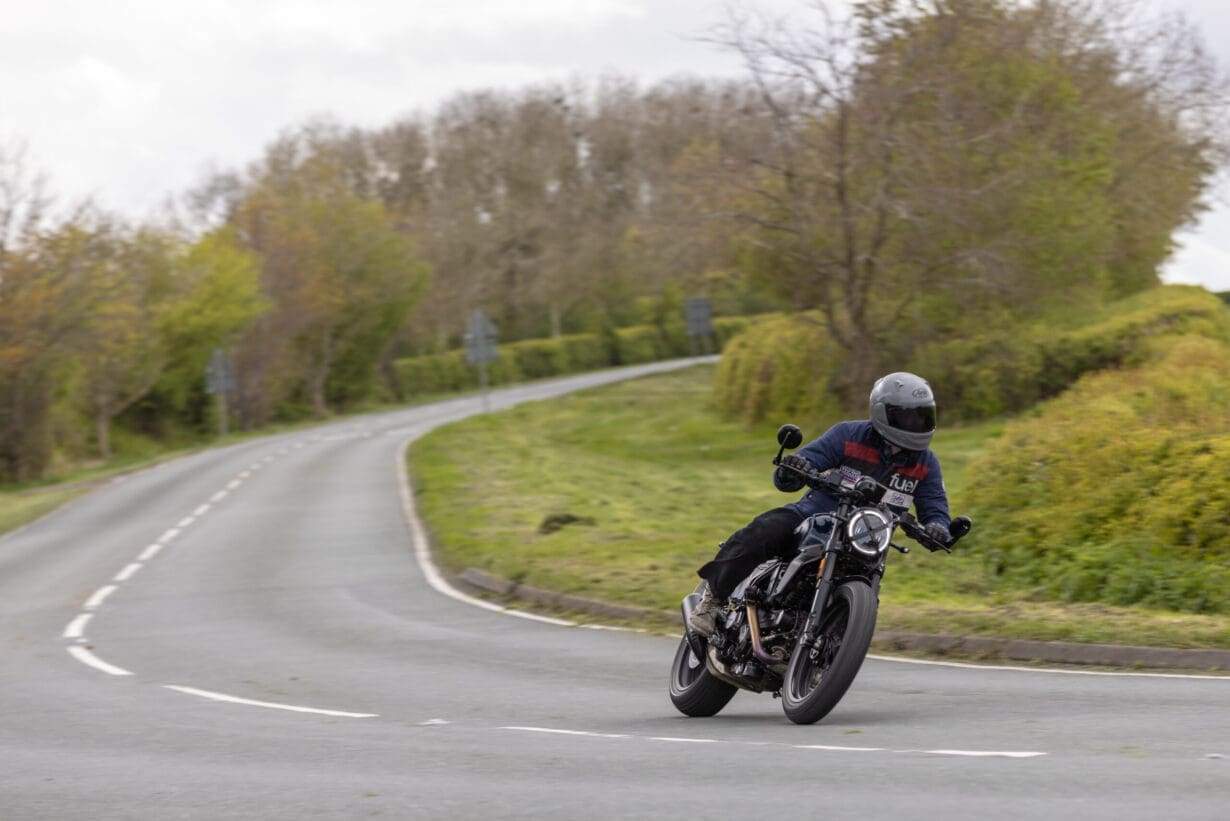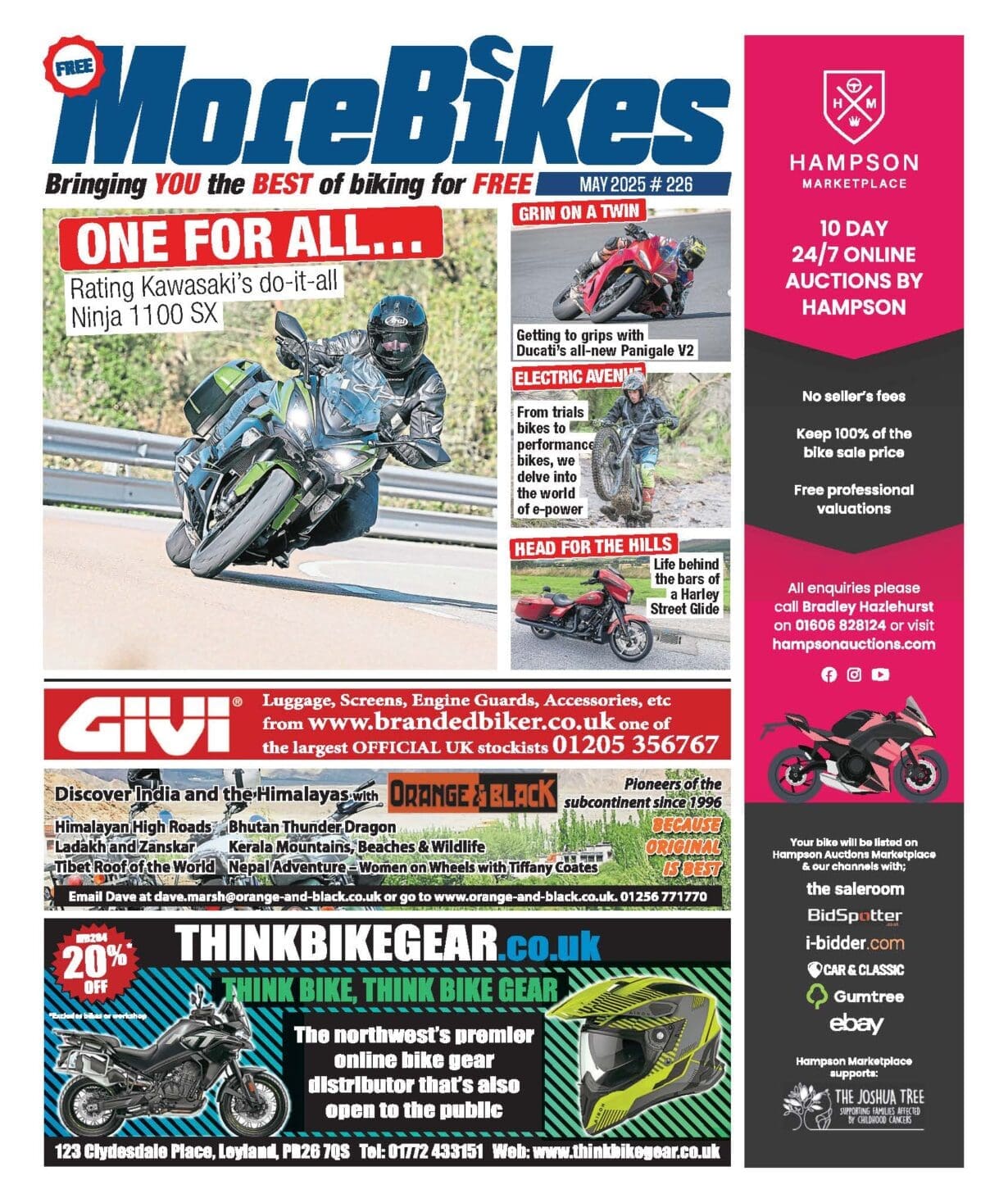Ross Mowbray has been astride the head-turner from Bologna, but is it turning his head? We found out…
Ducati’s Scrambler has been a barnstorming success for the Bologna-based firm since its release in 2015. In the intervening years, it’s carved out an enviable reputation as a brilliant back-road blaster and town-traffic buster that harks back to simpler times. It’s been nipped, tucked, tweaked and improved since its launch – and the latest generation is around 80 per cent new, featuring a swanky new electronics package to bring it bang up to date.

There’s always been bags of choice, too, allowing punters to snag a Scrambler that best suits them. Back in 2015 there was a whopping seven to choose from, including the diddy A2 licence friendly Sixty2. The range is a little less extensive nowadays, with the 803cc Icon, Full Throttle and Nightshift accompanied by the bigger, badder 1079cc 1100 Sport Pro.
All three of the ‘smaller’ Scramblers are built around the same engine and chassis combination, which consists of an 803cc air-cooled L-Twin, a revised tubular steel trellis frame, Kayaba springs and Brembo brakes, so it all felt very familiar.
There are some key differences between the bikes. Away from the sharp paint job, the most obvious difference for the Nightshift is the set of slightly heavier spoked wheels (shod with a set of Pirelli’s pseudo off-road MT 60 tyres). It also gets some ‘variable section’ handlebars, smaller LED indicators, bar-end mirrors, and a brown leather seat. Nothing groundbreaking – but enough to help it stand apart as a different proposition than the others in the range.
The good stuff continues when you get moving. The Nightshift’s 803cc twin motor’s never going to set the world alight, but its characterful performance is just as good as the other similar-sized scrambler bikes on the market. There’s a nice whack of progressive power which makes cracking open the throttle a satisfying and surprisingly risk-free endeavour. It’s easy. The six-speed gearbox is reasonably slick, and the updated clutch is plenty light.
It handles well, too. Despite the relatively soft Kayaba suspension, which consists of 41mm forks up front and a single shock at the rear, the Nightshift holds itself admirably. Nice and precise in the turns, you’ll be surprised at just how much fun it is throwing this thing from side to side through the tightest of twisties. The lack of adjustment (there’s only preload at the rear) is a bit of a shame, but it’s well enough set up that most riders wouldn’t feel any need to make tweaks. The Pirelli MT60 rubber performs better than you’d expect, with both wet and dry grip consistent and confidence inspiring.
The Brembo brakes help it to haul itself to a halt pretty swiftly. There’s plenty of bite – and more than enough light-fingered feel – though a firm hand will see the front suspension diving under pressure. That said, with Bosch Cornering ABS fitted to both the front and rear, even the most ham-fisted of riders would have a hard time getting things really out of shape.
I think it’s a great bit of kit. While most riders will probably use it for a quick midweek blast to a bike night or a sunny Sunday run to the coast, it’s a surprisingly versatile machine. Its tank size and the amount of miles it’ll do per gallon might limit its effectiveness as a true big-mile tourer, but if you’re happy taking your time and avoiding the motorways (where the wind blast would drive you mad), I reckon you could have a great time exploring off-the-beaten-track.


